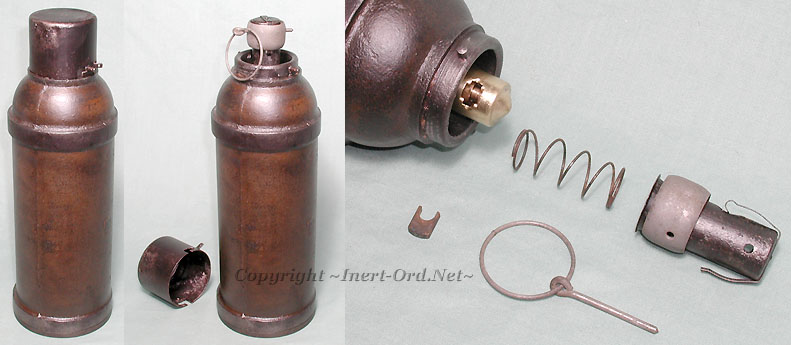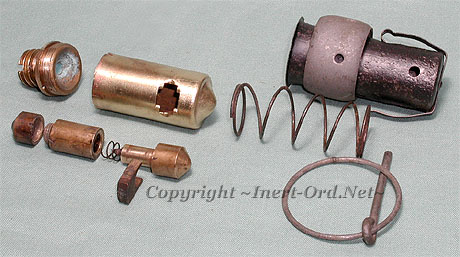
In the early years of WWI Germany was late to embrace the idea of a small portable mortar for infantry and the Lanz Minenwerfer (“Mine Launcher”) was a quick answer to that need. The Minenwerfer is a class of muzzle-loaded mortar artillery which were not drop-fired, but had a trigger mechanism, and generally were smooth bore. They were direct descendants of 19th century siege mortars.
A more advanced concept developed at the same time was the British Stokes, which eventually matured into the modern infantry mortar.
The Lanz was mounted on a frame chassis fixed to a wooden sled with iron reinforcements. The entire weapon was less than waist high. The firing mechanism was a locking bolt system (like a rifle) which accepted a special propellant cartridge. The gun was fired using a pull cord. It was put into production in 1915, manufactured in Mannheim by Heinrich Lanz.
Worth noting in the photo above, besides the Minenwerfer, are two stick grenades, variations of the French Pétards Raquettes, Mle.1915. Also note the large pistols (left) which appear to be Hebel Model 1894 flare pistols. In the foreground is what looks like a German Model 1895 'derringer' style flare pistol, action open. Another (right), held pointing down, could be a Mle.1915 French type.
An interesting display of Trench War weaponry circa1915.



